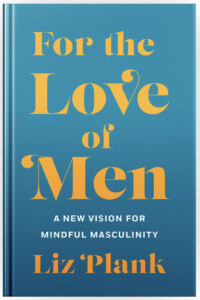The concept of a gender binary, the notion that you are either man or woman, has been thrown into public discourse enough times that it is now considered to be debunked in many respected academic circles. Many parts of society have already started moving past the notion of fixed roles and expectations based on your sex at birth, which is supposedly determined by your chromosome combination. This is seen in the slow acceptance of the existence of transgender people, with life and identity-affirming accommodations becoming more commonplace. These include the gradual embracement of concepts such as someone choosing to undergo hormone replacement therapy, bottom and top surgeries, and asking for preferred name and pronouns, regardless of how it may appear in identification documents. However, what is far less discussed is the falsity of the sex binary, the idea that you are either a biological male or female. Even within trans circles, there exists the misconception that your biological sex not only exists, but it cannot be changed. It is said that XX chromosomes mean you are female, and XY mean you are male. This concept is not as rooted in biology as some people may think it is. The very existence of intersex people debunk this construct; their very existence showing how sex is far too nuanced to be arbitrarily grouped into just two categories.
Intersexuality, as defined by the Intersex Society of North America, “is a general term used for a variety of conditions in which a person is born with a reproductive or sexual anatomy that doesn’t seem to fit the typical definitions of female or male” (https://isna.org/faq/what_is_intersex/ CITATION NEEDED). It is estimated that “approximately 1 or 2 percent of children are born with mixed or ambiguous sex characteristics” (GENDER AND GENITALS CITATION NEEDED). This means that anywhere between 79 to 158 million people on this planet do not squeeze into this archaic binary that we know as sex. The notion of the sex binary implies that you are either biologically male or female. If you are male, you must have XY chromosomes, a penis, testicles, and an Adam’s apple. If female, you must have XX chromosomes, a vagina, a set of breasts, and ovaries. Intersex people may have some combination of the above-mentioned traits, or just entirely different traits altogether. One such example of this is the existence of people with XXY chromosomes, known as Klinefelter Syndrome (CITATION NEEDED https://isna.org/faq/conditions/klinefelter/). The fact that people can have a different combination of chromosomes than that which the gender binary mandates the arbitrary grouping of is enough in of itself to debunk this myth altogether. Additionally, it is important to note that referring to people with XXY chromosomes as a syndrome is stigmatizing and it is only seen as such in the context of a gender binary, being perceived as a sort of sickness, rather than a valid form of identity.
People whose biological makeup does not conform to the sex binary continue to be mutilated as newborns without the ability to consent. Hubbard writes, “In the last few decades, in conformity with the binary paradigm, medical interventions have been developed to try to
‘correct’ the genitals of infants who manifest any form of sex ambiguity” (GENDER AND GENITALS CITATION NEEDED). These operations are, admittedly, sometimes necessary for health reasons, such as to surgically create a urethral opening, as some intersex newborns are not capable of passing waste on their own. Despite often having a physical makeup that poses no immediate risk to the infant in question, their genitals are operated on in order to conform to the sex binary, meaning that they will be shaped into either a penis or vagina. Such operations are done without the consent of the patient, as newborns cannot consent. These procedures are more for the sake of appeasing the society around the patient than it is for the patient’s own wellbeing. The notion of a sex binary justifies the mutilation of vulnerable people, leaving them with more questions than answers as they grow up.
Society needs to undergo massive changes so that this notion of a harmful sex binary is abolished. It is not rooted in biology, as the very existence of intersex people disproves that. It is used as justification in order to violate the bodies of newborns. Schools should teach about sex as a spectrum rather than the black-and-white dichotomy of male and female. On the medical level, an intersex newborn should be operated on as minimally as possible, with procedures being decided upon as medically necessary.



